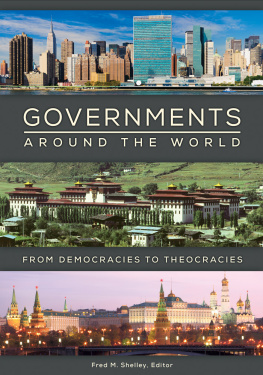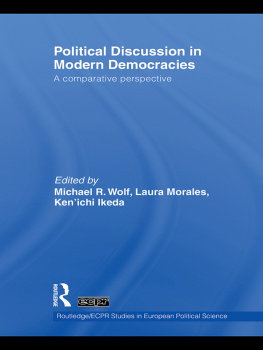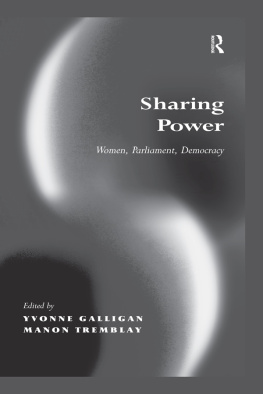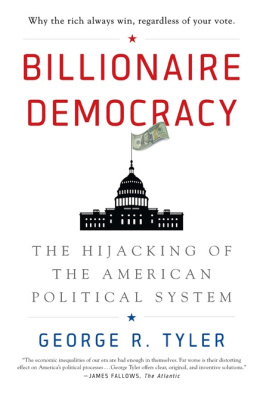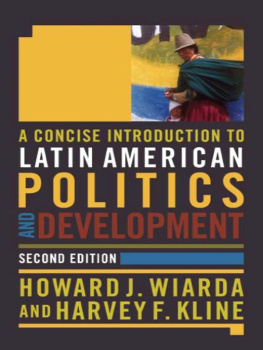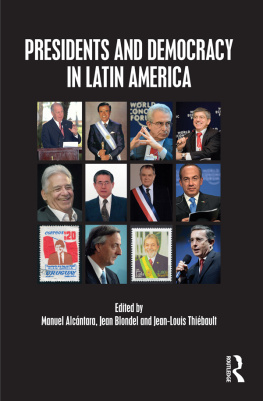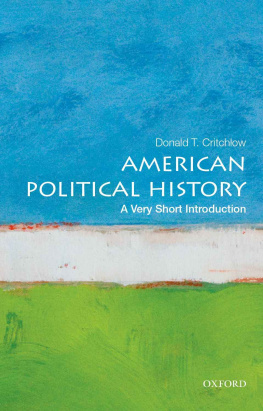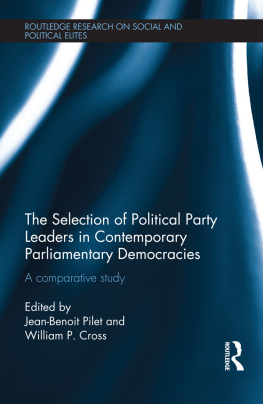A DIFFERENT DEMOCRACY
A DIFFERENT DEMOCRACY
American Government in a Thirty-One-Country Perspective
STEVEN L. TAYLOR
MATTHEW S. SHUGART
AREND LIJPHART
BERNARD GROFMAN
YALE UNIVERSITY PRESS
New Haven & London
Copyright 2014 by Steven L. Taylor, Matthew S. Shugart, Arend Lijphart, and Bernard Grofman.
All rights reserved.
This book may not be reproduced, in whole or in part, including illustrations, in any form (beyond that copying permitted by Sections 107 and 108 of the US Copyright Law and except by reviewers for the public press), without written permission from the publishers.
Yale University Press books may be purchased in quantity for educational, business, or promotional use. For information, please e-mail (UK office).
Designed by James J. Johnson.
Set in Melior Roman, Copperplate Gothic, and Avenir Next types by Newgen North America.
Printed in the United States of America.
Library of Congress Cataloging-in-Publication Data
Taylor, Steven L., 1948
A different democracy : American government in a 31-country perspective / Steven L. Taylor, Matthew S. Shugart, Arend Lijphart, Bernard Grofman.
pages cm
Includes bibliographical references and index.
ISBN 978-0-300-19808-9 (paperback)
1. DemocracyUnited States. 2. United StatesPolitics and government. 3. Comparative government. I. Shugart, Matthew Soberg, 1960 II. Lijphart, Arend. III. Grofman, Bernard. IV. Title.
JK1726.T38 2014
320.473dc23
2014014631
A catalogue record for this book is available from the British Library.
This paper meets the requirements of ANSI/NISO Z39.481992 (Permanence of Paper).
10 9 8 7 6 5 4 3 2 1
To our many students who were not only our guinea pigs but also our teachers and who contributed to making this a better book
Those who know only one country know no country.
SEYMOUR MARTIN LIPSET
CONTENTS
PREFACE
It is often said that the United States has an exceptional democracy. This can mean any number of things, but we are concerned with the question of whether the structure of American democratic institutions is similar or dissimilar to other democratic states. If it is different, in what ways is American democracy differentand do those differences matter? What explanations exist for these differences? These are the themes that animate this book.
Specifically, our book examines the choices made by the designers of American government at the Philadelphia Convention of 1787 and the institutional structures that evolved from those choices, and compares them to thirty other democracies. The basic topics for comparison are as follows: constitutions, federalism, elections, political parties, interest groups, legislative power, executive power, judicial power, and public policy.
Each chapter starts with a discussion of the feasible option set available on each type of institutional choice and the choices actually made by the US founders as a means of introducing the concepts, and then it discusses how specific choices made in the United States led to particular outcomes. We look at the discussions on these topics in The Federalist Papers and the debates in the Philadelphia Convention. This approach gives us a means of explaining the concepts in a comparative fashion (for instance, federal versus unitary government, unicameralism versus bicameralism, and so on) before moving into the comparisons of the American system with our other thirty democracies, which make up the second half of each chapter. Each chapter contains an explicit list of specific differences between the US and the other democracies as well as comparative data in tabular and graphical formats. All of the figures and tables contain comprehensive comparative data featuring all thirty-one cases (save in a handful of instances) or specific thematic subsets of the thirty-one cases (for instance, presidential systems or bicameral legislatures).
Our book can serve two important functions: as a textbook and as a scholarly contribution. First, as a textbook it can work in a variety of courses and course levels, depending on the aspects of the text a given instructor wishes to emphasize. On one hand, the text takes a fairly straightforward look at basic topics in government and mirrors the topics that might be used at the introductory level. On the other hand, the book demonstrates both rigorous comparisons and raises a number of theoretical issues linked to institutional design. It can therefore be used at multiple levels depending on the nature of the course and the focus of a given instructor:
1. The basic themes of the book, and the structure of the chapters, were chosen to correspond to the themes typically found in introductory American government textbooks. Our goal was to make it possible for the comparative-minded professor to use the book to augment a basic American government textbook. While some of the more-advanced themes might be downplayed in such a course, the book can very easily be used as a supplement for American government texts.
2. Our book can also be used as a book in undergraduate comparative politics courses. It can serve as an anchor text on a syllabus in such courses focused on democracy and institutional design, but also as a secondary text alongside more-general textbooks.
3. It can also be used at the graduate level, insofar as it provides a comprehensive comparative study of the thirty-one cases and makes a number of theoretical claims that can be delved into further at this level.
Our book also makes a scholarly contribution by means of its analysis of the variations of democracy between the United States and the rest of the world. There is a void in the literature in that few works explicitly treat the United States as one case among many. Rather, political science tends to be segmented into fields of American politics and comparative politics, with the latter often meaning, in practice, any country or countries other than the United States. We believe that this is detrimental to both the study of the United States and to comparative political inquiry. Our book seeks to stimulate placing the United States into a broader comparative perspective. At the moment the segregation of the United States from the rest of the world within political sciencein faculty hiring, teaching from undergraduate to graduate levels, in many professional journals, conference programs, and university press catalogstends to give the impression that comparative institutional analysis is relevant only in foreign lands. There is a need to understand that the United States is not exceptional in the sense that we are just as bound by institutional constraints and pathways as is any other population. We think this can best be done by comparing US practices to those of other, relatively large, established democracies.
The origins of this book can be directly traced to two seminars taught jointly by Bernard Grofman and Arend Lijphart in the winter quarters of 1996 and 1999 to combined groups of graduate students at the University of California campuses in Irvine and San Diego. In four of the ten weeks the students from one campus attended the seminar at the other campus, alternating between campuses. The other six weeks the course was taught via teleconferencing, using the University of California network and facilities at each of the campuses. The seminars used draft versions of Lijpharts Patterns of Democracy as their template for how to situate the United States in comparative perspective. Grofman and Lijphart had met and become friends in 1977 and coedited three books, on electoral systems and reapportionment issues, in the 1980s.
In 2000 they agreed to turn their seminar on The United States in Comparative Perspective into a book. After Lijpharts retirement from teaching at UC San Diego, Grofman taught the seminar twice on his own as a required course for graduate students affiliated with UC Irvines Center for the Study of Democracy (CSD), but progress on turning the seminar into a book was slow as a result of a multitude of competing commitments in the early 2000s, such as the completion of a fourth coedited book, on electoral and party systems in the Nordic countries. While both authors remained strongly committed to the project, it became clear to them that only with the collaboration of another scholar or scholars would the book ever get written. They invited Matthew S. Shugart in 2003 to join the project as a third coauthor. Progress picked up and draft chapters were written by Lijphart and Shugart in the mid-2000s. In the spring quarter of 2007, Shugart cotaught a course with his PhD candidate Royce Carroll at UC San Diego, building the course primarily around the draft chapters that then existed and drafting some new chapters. In addition, Shugart developed some of the themes that would later evolve into the theoretical framework of this bookespecially the grounding of the comparative analysis in the writings of Madisonin his Policy-Making Processes, a course he taught for many years for the Masters of Pacific International Affairs program at UC San Diego.
Next page

